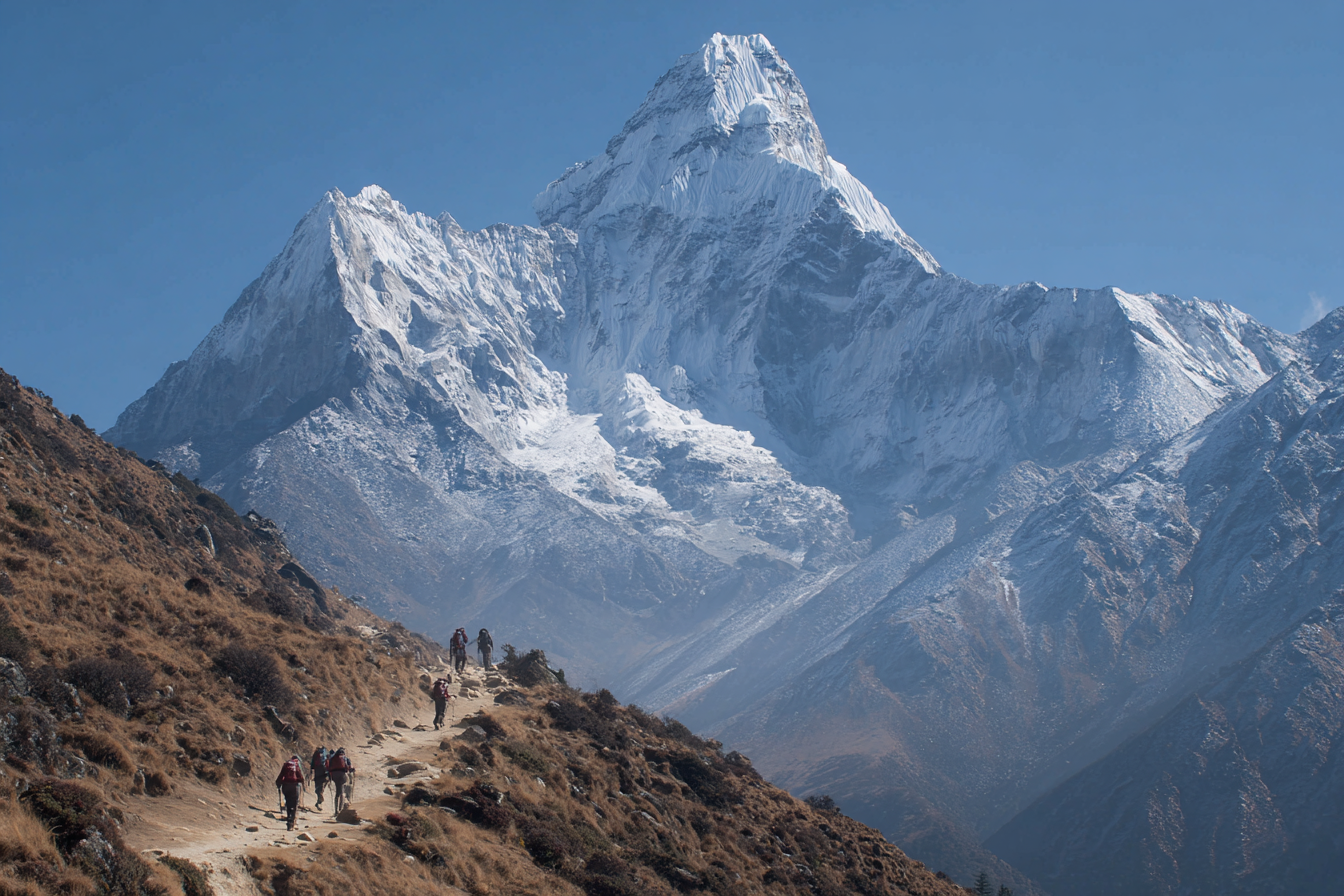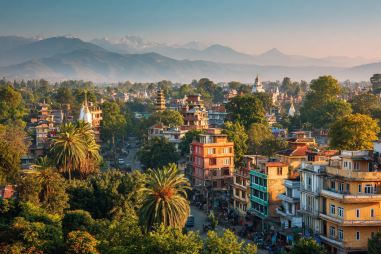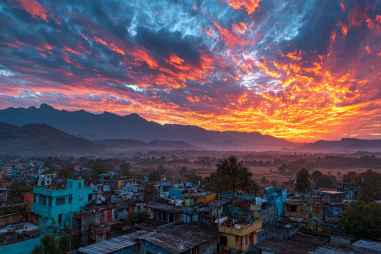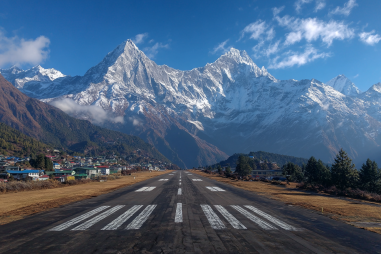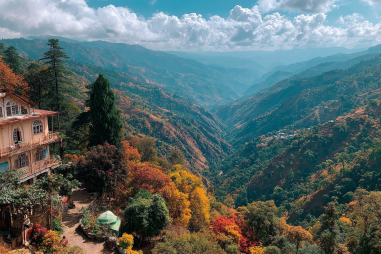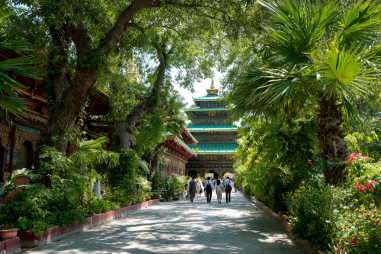Embarking on the Lukla to Everest Base Camp trek is a thrilling and deeply rewarding adventure. Nestled in the stunning Himalayas, this classic trail offers breathtaking views, cultural encounters, and a profound sense of accomplishment. Whether you’re dreaming of standing at the foot of the world’s highest peak or simply eager to explore the heart of Nepal’s mountainous soul, this step-by-step guide will help you navigate the trek with confidence. From daily itineraries to safety tips, let’s prepare you for an unforgettable journey.
Introduction to the Lukla to Everest Base Camp Trek
The trek from Lukla to Everest Base Camp (EBC) is one of the most iconic hiking routes in the world. Starting with a scenic flight to Lukla – a small mountain town famous for its challenging airstrip – trekkers then journey through Sherpa villages, lush forests, and rugged terrain all the way to the base of Mount Everest. This trek is not just about reaching EBC; it’s about experiencing the culture, nature, and camaraderie of the Himalayan region with every step.
Detailed Day-by-Day Itinerary
The trek typically takes about 12 to 14 days, allowing for acclimatization and exploration. Here’s a suggested day-by-day itinerary to guide you:
- Day 1: Arrival in Kathmandu and final preparation.
- Day 2: Flight from Kathmandu to Lukla (2,860m), then trek to Phakding (2,610m) – approximately 3–4 hours.
- Day 3: Trek from Phakding to Namche Bazaar (3,440m) – roughly 6 hours.
- Day 4: Acclimatization day in Namche Bazaar, with optional hikes to Everest View Hotel or Syangboche Airport.
- Day 5: Trek from Namche Bazaar to Tengboche Monastery (3,860m) – about 5 hours.
- Day 6: Trek from Tengboche to Dingboche (4,410m) – around 5 hours.
- Day 7: Acclimatization day in Dingboche with short hikes to nearby viewpoints.
- Day 8: Trek from Dingboche to Lobuche (4,940m) – approximately 5 hours.
- Day 9: Trek from Lobuche to Everest Base Camp (5,364m), then return to Gorak Shep (5,164m) – up to 8 hours.
- Day 10: Early morning hike to Kala Patthar (5,545m) for sunrise views, then trek down to Pheriche.
- Day 11-13: Descent back through Namche Bazaar to Lukla.
- Day 14: Flight back from Lukla to Kathmandu.
Highlights on the Trail
Trekking to Everest Base Camp is packed with awe-inspiring highlights, including:
- Namche Bazaar: The vibrant Sherpa capital, full of shops, tea houses, and local culture.
- Tengboche Monastery: A beautiful Buddhist monastery offering panoramic views of Ama Dablam and Everest.
- Everest Base Camp: The ultimate trekking goal, where climbers gather before summiting Everest.
- Kala Patthar: A vantage point renowned for its stunning sunrise views over Everest and surrounding peaks.
- Mountain vistas: Continuous breathtaking panoramas of snow-capped Himalayan giants.
Altitude and Acclimatization
One of the biggest challenges on the Lukla to Everest Base Camp trek is the altitude. The trail climbs from roughly 2,860 meters (Lukla) to over 5,360 meters at the base camp. Altitude sickness is a serious risk, so acclimatization days are crucial. These rest days allow your body to adapt to thinner air, reducing headaches, nausea, and fatigue. It’s important to ascend slowly, stay hydrated, and heed all signs of altitude sickness. If symptoms worsen, descending immediately is the safest choice.
Necessary Permits and Fees
Before starting the trek, you’ll need certain permits to legally enter and trek in the Everest region:
- TIMS Card (Trekkers’ Information Management System): This permit helps monitor trekkers and costs around $20 for individual trekkers.
- Sagarmatha National Park Permit: Required to enter the park surrounding Mount Everest, costing about $30.
- Local Fees: Some villages may require small entrance fees or contributions to local conservation efforts.
Permits can be obtained in Kathmandu, often through trekking agencies or by visiting the Nepal Tourism Board offices.
Accommodation and Food Options
Accommodation along the trail is primarily basic teahouses and lodges offering hot meals and warm places to sleep. The facilities become more rustic the closer you get to higher altitudes. Typical amenities include shared bathrooms, simple beds, and communal dining areas. Popular menu items include dal bhat (rice and lentils), noodles, soups, and fried potatoes.
It’s wise to carry some snacks like energy bars and chocolates, especially for long trekking days. Drinking boiled or purified water is essential to avoid illness. Many teahouses also offer WiFi and charging facilities, usually for a small fee.
Tips on Fitness and Preparation
Physical preparation for the Lukla to Everest Base Camp trek is key for an enjoyable and safe experience. Recommendations include:
- Cardiovascular training: Activities like running, cycling, or swimming help build stamina.
- Strength training: Focus on leg muscles, core strength, and back muscles to ease carrying your backpack.
- Practice hikes: Try walking long distances with a weighted pack to simulate trekking conditions.
- Mental preparation: Be ready for challenging weather, changing trail conditions, and physical exertion.
Consult your doctor before the trip, especially if you have medical conditions.
Best Time for the Trek
The ideal trekking seasons for the Lukla to Everest Base Camp trail are:
- Spring (March to May): Mild temperatures, blossoming rhododendrons, and clear skies make this a top choice.
- Autumn (September to November): Stable weather and excellent visibility bring breathtaking mountain views.
Avoid the monsoon season (June to August) which brings heavy rainfall, slippery trails, and increased risk of landslides. Winter (December to February) is less crowded but very cold with possible snow blocking high passes.
Safety Considerations
Safety should be your priority throughout the trek. Here are some important points to keep in mind:
- Altitude sickness: Monitor symptoms closely and respect acclimatization days.
- Weather conditions: Carry appropriate gear such as waterproof jackets, warm layers, and sturdy footwear.
- Guides and porters: Hiring experienced guides not only supports local communities but can enhance safety.
- Emergency services: Familiarize yourself with evacuation options and carry a first aid kit.
- Communication: Keep your phone charged, and consider renting a satellite phone if trekking solo.
Always listen to your body and don’t hesitate to turn back if you feel unwell or conditions worsen.
Setting out on the Lukla to Everest Base Camp trek is an extraordinary experience that challenges you physically and enriches you spiritually. With careful preparation, awareness of the trail’s demands, and an open heart for adventure, every step taken will bring you closer to memories that last a lifetime. Embrace the journey, admire the majesty of the Himalayas, and celebrate the achievement of standing at the bottom of the world’s tallest mountain.

